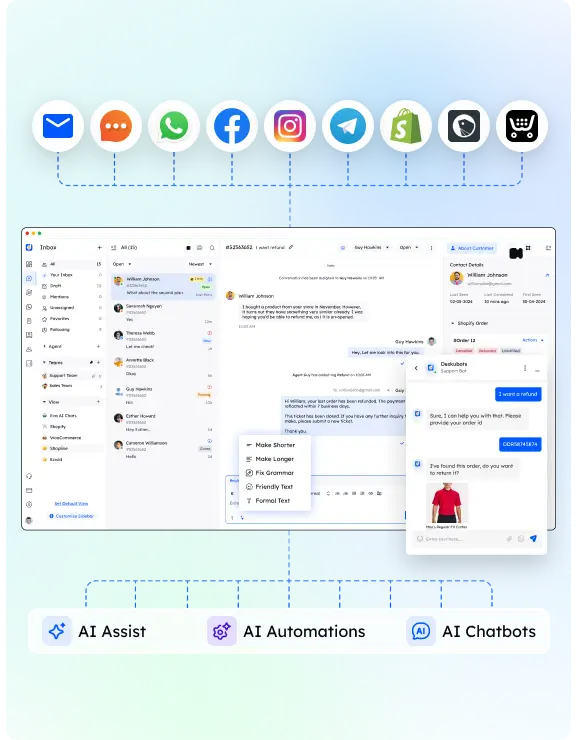A customer service team is the foundation and a representation of any business, may it be small or big! How to make a good support team that helps in building a good customer experience.
Great customer service is directly proportional to building a customer support team that provides excellent customer service.
To know the customers better you must take the customer feedback seriously and implement it in your company.
Talking about the small business, they are always looking for these questions.
How to build a customer service team?
Building a customer service team can be a challenging part of running a business but it becomes easier when you know some of the tactics.
Let’s get into this article further to learn about how can you build the best customer service team and outgrow your business!
Before that let’s understand what you know about the customer service team.
Key Takeaway :
Building an effective customer service team is crucial for any business, big or small, to boost customer experience. To build a great customer service team, you need to define the tasks of support teams, create an accurate knowledge base, improve and evaluate customer support teams, use the best customer service tools, stay available on multiple support channels, and focus on CSAT and data that matters to your business.
What is a Customer Service Team?
A customer service team represents the business. The way you talk to customers or visitors is what leaves an impression on your customer’s mind.
There is a thin, very thin line between customer service and customer support. They are interconnected for sure but there is a slight difference that everyone should know!
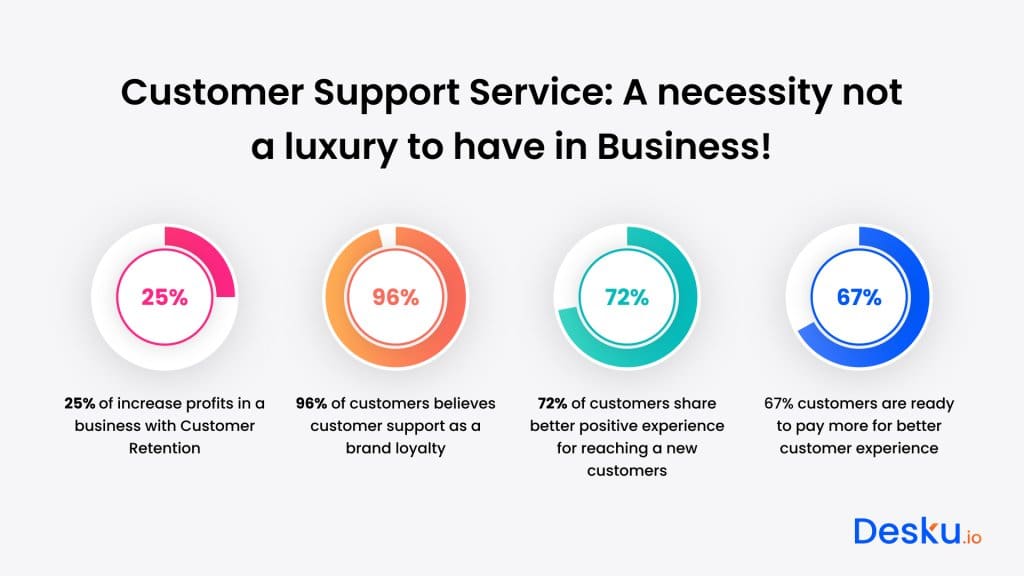
A customer support specialist is someone who provides proactive support and answers customers whenever they need help.
Customer support is always a part of the customer service team, a small segment of it.
Talking about customer service skills, it is responsible for providing specific service to customers. There is plenty of customer service strategy that helps in building and improving the customer experience.
A customer will always expect unbiased support from you and if possible they will also expect the solution within a few seconds from team members.

Manage customer support team with these points;
✅ Provide Support proactively
✅ Listening to customer questions and solving them precisely
✅ Using the best customer service tools to provide customer satisfaction and build your customer service team
✅ Personalisation for customer relationship management
A customer service manager has a lot that is observed but there are a few tasks that one should always focus on while building a customer support team from scratch if your business is just starting up!
If you are already one outgrown business and if you are not able to manage a service team, then read further there are some interesting ways for you, trust me.
How to Build a Customer Service Team? [Best 6 Ways]
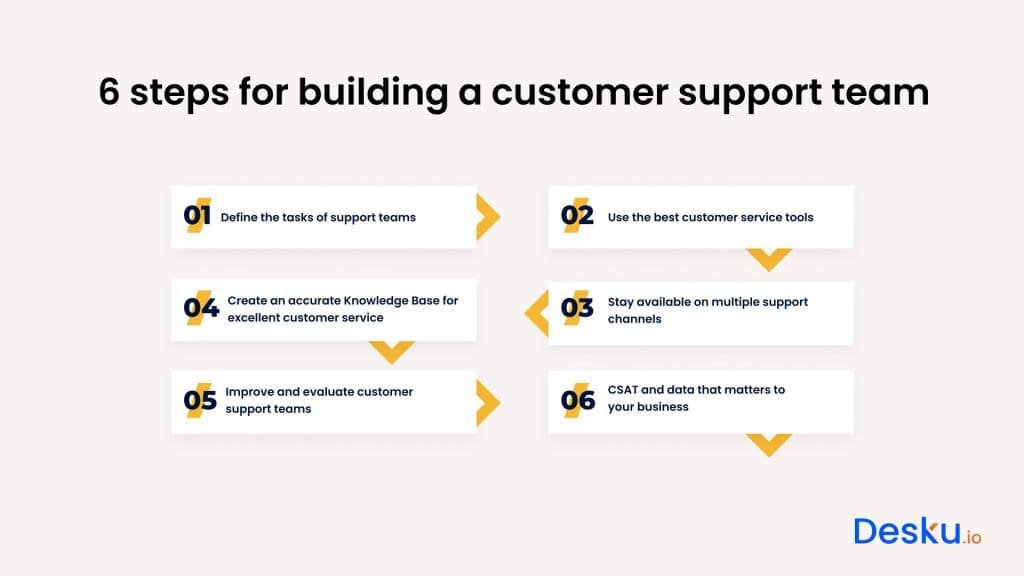
Building a customer service team is a complicated part because it is responsible for these things;
✅ A powerful customer interaction for customer retention
✅ Maintaining and managing a customer service team
✅ Train customer support team members to answer customer questions accurately
✅ Take up all the support requests
and a lot more!
There is still a lot more to do, and today in the world where we have outgrown our digitalisation use, we will always find thousands of competitors and the only way is by providing great customer service, let’s know them and know what you can implement and define what excellent customer service looks like.
👉🏻Define the tasks of support teams
Roles and permission an important aspects of a customer service representative. There are many ways to handle it. Some customer service handles the proactive live chats, and some pivot the queries to the right team or department. To build a great customer service team is to have a specific role. To provide what customer needs is the key step to improve your customer support team. When you define the right role for service agents it will be easier to define the task as well as see for the qualification while hiring the right candidate.
You will know better while onboarding new team members when the qualification and task are defined correctly as it will serve the accurate service to customers and there are high chance of customer satisfaction.
👉🏻Use the best customer service tools
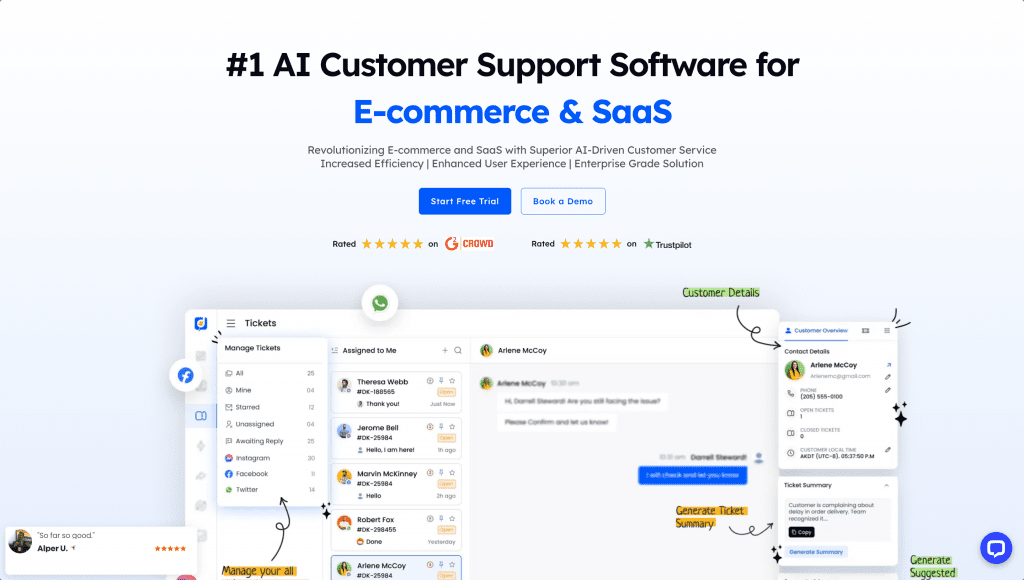
A customer service tool works like a catalyst, the factor that will help ease down the workload and manage your customer service team. It becomes easier to resolve customer issues with the right tools. A great support is the instant ones. Look for these features if you are looking for the customer support platforms;
📌Live Chat for connecting instantly with the support agents
📌No-code chatbot builder that helps in talking to customers even when agents are not present
📌AI-supported helpdesk helps to understand the customer service philosophy and answers precisely.
📌Shared and unified inbox is a centralised way of dealing with common customer queries because every customer interaction counts.
📌CSAT for knowing the customers better and timely updates on the business

👉🏻Stay available on multiple support channels
To provide excellent customer service to customers, you must stay available on channels where your customers are present. Customer service professionals should be available on every platform to approach customers whenever they try to contact you, no matter the platform. For this, it is important to integrate social inbox with the customer support tools.
Apart from that it is important to build one support portal that will help to note down the customer service metrics timely and make changes accordingly. Customer success can be measured much more easily with customer service software. Staying available on multiple channels will help to bring the trust and make it possible providing the best possible customer support team will need and will be able to give it.
👉🏻Create an accurate Knowledge Base for excellent customer service
A knowledge base is the first step in providing the customer self-service support to customers. The knowledge base is nothing but the collective information provided already for customers to have a look at when they need it. It is all handy information that customers are always looking for, whether it is some common queries or some repeated questions, knowledge base solves it all.
Apart from that it is stated that;
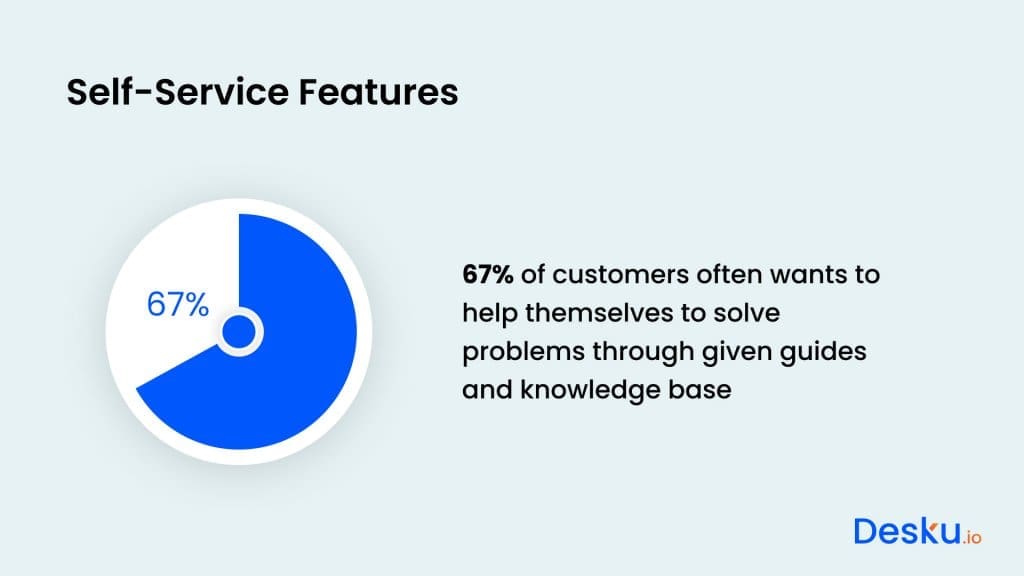
It is surely one of the best options to deal with different types of customers contacting you in the business. If you are building a support portal, the knowledge base is one of the best to look forward to building it.
Customer service is not like always constantly providing them answers and being on your toes, it is a common customer service that customers are looking for when they try and come in contact with you.
👉🏻Improve and evaluate customer support teams
Do you know the importance of the customer support teams? Your support team is to define and represent your company in front of some random visitors and unknown people. Customer support hiring can be a daunting task as it involves some of the best verbal skills and a deep grasp of dealing with customers. For consistency and excellent customer experience, it is important to evaluate and improve your customer support teams.
While building a customer service team, not only having reactive support is essential but ensuring they are equipped to handle diverse queries efficiently is vital. Consider integrating comprehensive client portal functionalities that foster seamless customer interactions and self-service options. This approach enhances overall customer satisfaction and showcases the ‘customer-centric’ efforts your team strives towards.
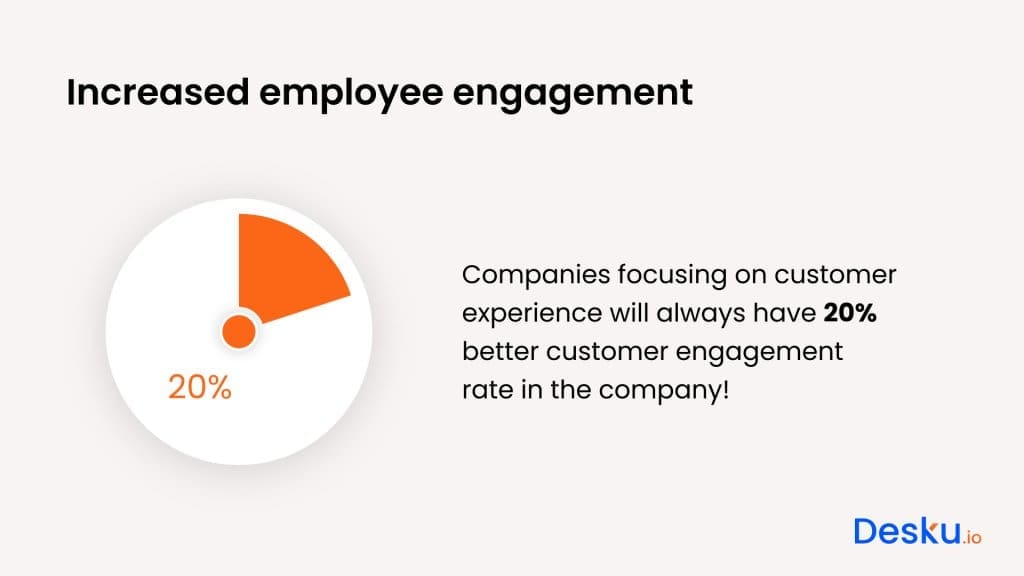
It is important to structure your customer service team and to build out your team in such a way that it is never laid back while being there for customers. What you can do to conduct regular evaluations that make a great customer support team? Let’s understand;
📌Set regular goals for the teams to achieve and fulfil in the given period.
📌Continuous look for ways to improve the team’s performance
📌Hire the right kind of customer service employees
📌Train them on how to respond to customers or provide support on a few channels (multiple channels)
These points will help to create a customer service better and it makes a good customer support company if you can implement these basic steps.
👉🏻CSAT and data that matters to your business
CSAT is one of the best decisions to implement when you build a team. A relationship between customer service and a customer is not just behind the screens, but also in the mind and for that, it is important to know your customers better. Reviews and ratings are the best ways to know their point of view that will ultimately help to shape the company further.
Feedback is important, especially the criticised ones. Always take that as constructive feedback and grow your team, ways to deal with visitors and customers, training customer support teams, and the product/service you are providing.
When you focus on the feedback of customers and implement it in the business, it becomes easier to make the whole business customer-centric and it always leads to one of the successful businesses. Find out ways of CSAT that work for your business and get to know customers better in the business.
Interesting Read:
How to measure the Customer Service Performance?
7 Best Ways To Measure Customer Satisfaction In The Business
Importance of Customer Support Team [Reasons + Benefits]
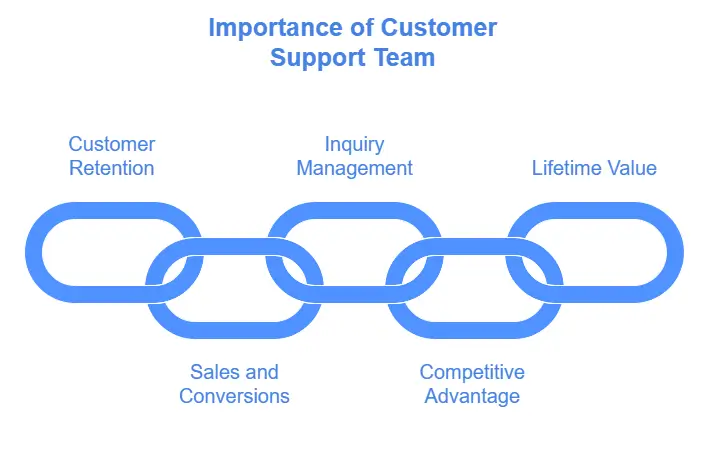
By now we know how important customer support is the important thing. It does more than just answer the customer’s questions. It not only helps to answer your questions but also increases sales and customer retention by 57% and it is a good number I must say.
Let’s know the best reasons and benefits to know the importance of customer support.
Customer Retention is easier than customer acquisition
Customer retention and customer acquisition cost (CAC) are one of the biggest tasks. Retention becomes easier compared to acquisition. According to the research, we have aligned the information that it helps in decreasing the churn rate.
Escalate in sales and conversions
Sales and conversions automatically increase when the customer support team show the right ways to serve the customer service. Good customer service provides viable trust and it helps to make another offer with the same company.
Pivoting the inquiries to the right person
You may receive ample customer inquiries in a day and it is difficult to respond one by one. Customer support is not only providing timely answers but also providing exceptional and accurate solutions. It is important that customers get the right and accurate answers and so pivot the query to the right person. Easily assign the inquiries to the right agent and person. Having the right customer support team, it becomes easier to solve problems faster and quicker.
Be different from competitors in the market
Providing the right customer support, it becomes much easier to conquer the market against the competitors. A customer will always remember the conversation that the support team has so it is important to provide outstanding support that includes proactive support, instant resolution of problems, and patiently hearing out your customers. This will provide a different impact and will make you stand out.
Build a lifetime value with customer service
Building a relationship with customers might be easier, but maintaining it is harder. Through various resolutions and tactics, you can always win the lifetime value with customer service. Conduct loyalty programs that will help to increase the customer range and interaction in the business.
Read More About:The 8 Best Customer Acquisition Tools for 2024
Conclusion: Build a thriving Customer Service Team
Without customers, there is no business.
Customers are the core of any business that will help to build an empire. For running a successful business, it is always important to take care of people who take care of the customers, and that is your customer support team.
A customer team plays an important role as it represents the business and showcases what you are looking for. Building a customer support team becomes much easier when they work with the right customer support platform like Desku. From managing customer queries to resolving them faster, it handles them all. The whole customer team can work together and can take up to the tickets to answer customers and provide accurate answers to them. A team is responsible for building the business.
Desku comes with the most useful features like shared inbox, knowledge base, live chat, chatbot, and much more. Not only that it help in managing customer queries but also helps teams manage it under one roof. Centralise and build the customer support game stronger.
Frequently Asked Questions
1) How do you structure the customer support team?
There are various ways to build the customer support team that are mentioned here;
– Define the tasks of support teams
– Create an accurate Knowledge Base for excellent customer service
– Improve and evaluate customer support teams
– Use the best customer service tools
– Stay available on multiple support channels
– CSAT and data that matters to your business
2) How can I make the customer support team better?
– Be Patient with your customers
– Adapt the situations that come by
– Conduct clear communication
– Train customer support better
– Admit the limitations and drawbacks from your side
3) What is the role of the customer support team?
The customer support team helps resolve and handle customer inquiries, provide solutions faster and empathise with them for their problem.

